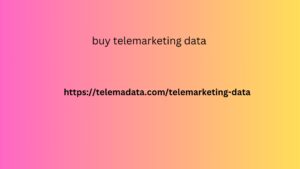What does it take to earn above-the-fold placement for your content marketing assets? A lot more now that Google has eliminated ads on the right-hand side and increased the number of ads on the top from a maximum of three to a maximum of four. In addition to the Find Out What’s Influencing increased number of ads, the top of the search page may be filled with Google’s local 3-pack, shopping options, and knowledge panel content followed by organic results. While the new ad layout may improve PPC campaigns, marketers and SEOs are still watching to see the impact on their content campaigns and worry that even their best efforts won’t result in top of the fold placements or even first page results.
Universal Search Results Feature
The new Google SERP (Search Engine Results Page) layout has changed what it means to rank second or third in organic search and, in some cases, top organic buy telemarketing data search results may not be visible above the fold for desktop and tablet users.
In the past, content marketers could feel confident that content ranking third in organic search results would be visible on the first page above the fold. Now, ranking first or second may still mean that your content isn’t visible above the fold. Marketers need to know what else ranked ahead of their content in search results to understand the true rank of their content and to make decisions about where to spend time and resources.
Erin Robbins, President Ginza Metrics
explains it this way, “Picture this: Your rank tracking tool tells you you’re ranking number one for some high search volume keywords and you think you’re golden. But you realize you’re not actually getting the traffic you once did. While you may be ranking number one in terms of organic results, there may be lots of other things on the page that pull user attention, and ultimately traffic away from you.”
Universal Search is a new feature in the platform that shows users all the other things that are appearing on the page along with their organic content and keyword ranking results, allowing marketers and SEOs to make decisions based on their “true rank” in the SERPs.
Screen Shot
The Universal Search results are displayed as icons to show what combination of ads, local pack, knowledge panel, and other non-organic content is on the page in any position. Users can filter out the results to view only those results that are important to them. Marketers and SEOs can use this information to determine exactly what’s appearing in organic search results and decide where to optimize for organic content rankings and where to focus paid efforts.
Creating a balance between PPC and Organic Content
While it may seem like the changes in the SERPs layout have unfairly targeted organic content, paid advertising results and associated costs have been impacted by the reduction of the number of ads shown on a page. Removing the ads from the right-hand side of the page and placing four at top and three at bottom has reduced the total number of ads on a page from eleven to seven and increased the competition for real estate on pages shown for high volume keywords.
Moving forward marketers
are going to have to be wary not to cannibalize their own results, paying or working toward appearing at the top of the same page with both paid and organic efforts. Using a tool, like Universal Search, marketers will now have a clearer picture of what’s happening when someone searches for a particular keyword. Given this information, marketers and SEOs can decide where to apply their efforts. Depending on their goals and who is appearing in the local pack and Google ad selection, brands have a few choices to make. They can:
Optimize content to try for the number one what is the difference between web design and web development position where there aren’t a lot of non-organic results.
Optimize local SEO to rank in the local pack.
Place ads instead of content.
Place ads on high search volume keywords (more expensive)
Run ads on lower search volume long-tail keywords (less expensive)
Focus SEO efforts on high search volume keywords.
Focus search on long-tail keywords.
However choices are made, it’s clear that we will have to continue to make hard choices based on having the best data available and getting the whole picture in terms of search engine results for all efforts, both paid and owned.
Staying at the top of the
The slimmed down look of Google results. Pages is another indication of Google’s commitment to providing great experiences for mobile devices. Even if individual businesses haven’t embraced the popularity of mobile, Google has been. Continuing to focus usa b2b list on providing the best possible experience for users of mobile devices and is backing that commitment up with the new search engine results page designs and continuing updates to the mobile-friendly algorithm changes.
Staying relevant to target audiences is still the best way marketers can get their message out and maintain their findability. Marketers who want to. Continue to show up in search engine results

